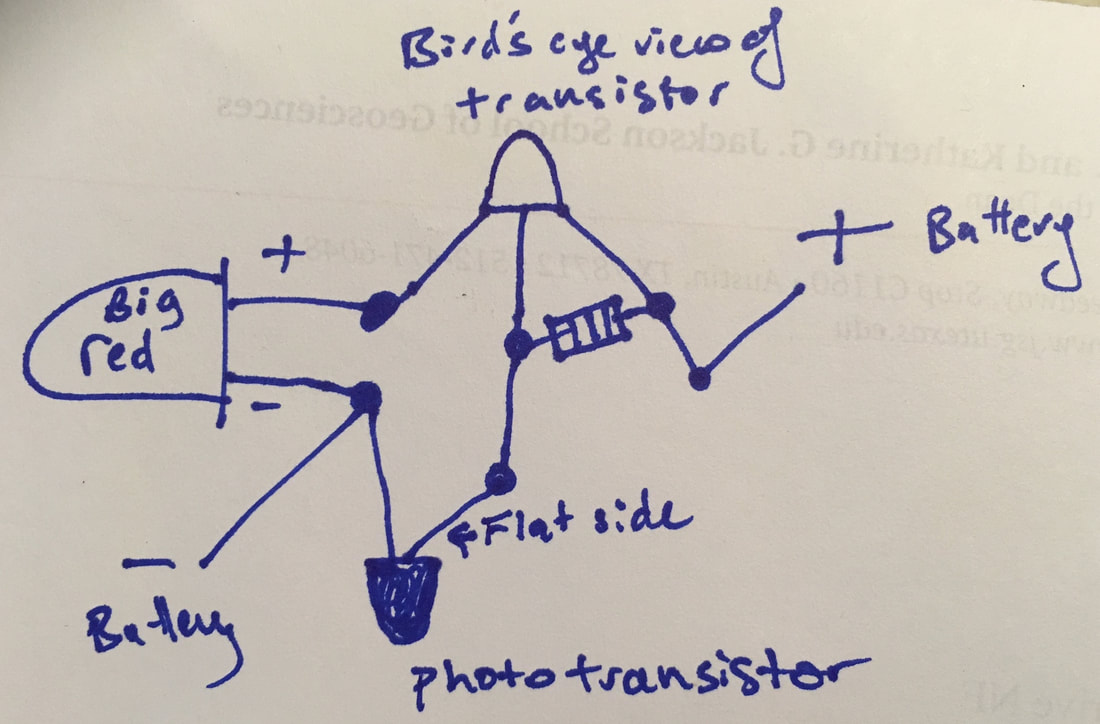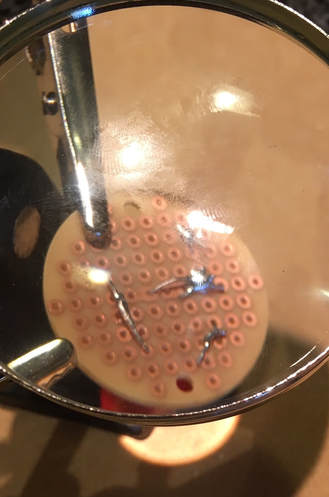|
I started this post over a year ago (!), but am just now getting to posting it—testament to my inconsistent blogging habits. With a sabbatical coming up this Spring, I hope to get back to this kind of writing, to share some recent developments on this project. I have been thinking about agency and materiality in relation to understanding and experience quite a bit lately, and how these relate to diversity and creativity. The tricky thing is this: 1. What you know about materials gives you ideas for what the materials "should" do—their being/doing potential. Expertise constrains thinking, and this is well known. 2. When you don't know what the materials are for, it seems easier to have becoming material conversations with them, but it can be hard to have functional, feasible ideas. For instance, I have been teaching myself circuits and so forth. I really like working with copper tape and LEDs. In the process of trying to make a light-up art piece (not shown in the video), I wondered what would happen if I put an LED in the wrong direction, and then that made me wonder what would happen if I also added an extra battery and switch. What did I know, that led me to design this circuit? First, I knew that LEDs are diodes, and diodes have polarity, meaning the current can only flow one direction. I did not know, however, if having two batteries might somehow break my circuit. Not only have my circuits-on-walls been a resource for students, they have also inspired others. A researcher who works with Arduino was visiting my lab and was struck by these, both as a teaching tool and as a jumping off point. He said the next thing he would do is add photoresistors. So that afternoon, I googled how they work. When I hold my flashlight up to the photoresistor, the circuit comes on, which is a kind of sad circuit, if you don't know to do that. And having a light come on if you shine a light on it seems useless. So that got me thinking about (1) other circuits that could be turned on by a photoresistor and (2) making a dark detector. After a bit of googling, I found the following: https://www.evilmadscientist.com/2007/a-simple-and-cheap-dark-detecting-led-circuit/. I found supplies that looked like what I needed. Since I was not sure if they were the same, I used a small breadboard to prototype. With a bit of assistance from my student Chen in reading (1) the circuit diagram and (2) the tiny numbers on the transistor, we got it to work! Next, I drew my own diagram, since the circuit symbols are still a bit unfamiliar to me, and I was a little unsure of a couple parts—in part because of Chen's assistance. Next I got my solder station set up and began moving components from the breadboard to a little round perfboard I had. I forgot to bring a battery holder home, so I'll have to figure that part out another time, especially given that the phototransistor needs day light to turn off—indoor light does not cut it. Next one to try: http://www.buildcircuit.com/darklight-sensor-using-transistor/). I think this one will work in a broader range of indoor lighting. And there are some interesting ways to use it with Arduino: http://www.oomlout.com/oom.php/products/ardx/circ-09 Maybe there is a Goldilocks spot in the middle—a shifting target for innovative work to happen as we learn? That idea is comforting for those still learning because it invites participation!
1 Comment
|
Vanessa Svihla, PhDAssociate Professor, Organization, Information & Learning Sciences Archives
October 2019
Categories
This material is based upon work supported by the National Science Foundation under Grant No. EEC 1751369. Any opinions, findings, and conclusions or recommendations expressed in this material are those of the authors and do not necessarily reflect the views of the National Science Foundation.
|
Proudly powered by Weebly






 RSS Feed
RSS Feed